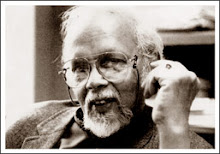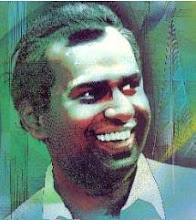Author: Dilshani Samaraweera
Date: Dilshani Samaraweera
Date:20/12/2009
The Janakaraliya (People’s Theatre) drama festival will come to the Lionel Wendt theatre from January 12 – 15, 2010, with a new generation of young bilingual actors and a string of stage drama’s crafted to overcome communal and language differences in Sri Lanka.
On December 18, Janakaraliya staged මැටි කරත්තය/ Meti Karaththaya (clay cart), at the Lionel Wendt theatre to a star studded audience, ahead of the drama festival.

Photo shows the 2 main characters, Vasantha Sena ( වසන්ත ෙස්නා ) , a beautiful courtesan in the city of Udeni ( උෙද්නි ) and Charudatta ( චාරැදත්ත ), a poor-nobleman, from the Janakaraliya stage drama Meti-Karaththaya (මැටි කරත්තය) . Photo provided by Janakaraliya/Mr Parakrama Niriella. All photographs and text are copyright protected.
True to its promise of bringing ‘quality theatre’ to Sri Lanka’s war-weary populations, Janakaraliya’s Meti Karaththaya displayed excellent theatre craft, including well trained young actors (even up to the single child actor), entertaining play acting, creative stage props, and beautiful costumes.
Typical of Janakaraliya plays the Meti Karaththaya cast is made up of both Sinhala and Tamil young people.
This means suddenly hearing a decided Tamil accent in some parts of the the Sinhala play, and vise versa. Although a little distracting at first, this technique actually adds to the richness of the overall production.

Photo shows Vasantha Sena ( වසන්ත ෙස්නා ) , the beautiful courtesan of Udeni ( උෙද්නි ) and Charudatta (චාරැදත්ත ), the poor-nobleman, from Meti-Karaththaya (මැටි කරත්තය). Photo provided by Janakaraliya/Mr Parakrama Niriella. All photographs and text are copyright protected.
Overall, the theatre craft and acting makes it possible to overlook the two and half hour duration of the play and its dubious morals that come coupled with a hint of Hindi-film melodrama .

Picture shows the beautiful courtesan Vasantha Sena (වසන්ත ෙස්නා ) , with Shakara (ශකාර), the villain of the play, Meti-Karaththaya (මැටි කරත්තය). Photo provided by Janakaraliya/Mr Parakrama Niriella. All photographs and text are copyright protected.
In fact, the ending of the play takes an unexpected turn and makes one wonder about serial killers in our past.
( Reminiscent of a popular theory on Jack the Ripper, with its links to the British royal family).

Picture shows Vasantha Sena ( වසන්ත ෙස්නා ) and Shakara (ශකාර) the rejected lover, from Meti-Karaththaya (මැටි කරත්තය). Photo provided by Janakaraliya/Mr Parakrama Niriella. All photographs and text are copyright protected.
One wonders whether the ancient author of this play wanted to transmit a warning message into the future through his play - about rare cases of serial murderers, because traditional Sri Lankan/Indian society does not officially acknowledge the existence of this tendency.
Meti Karaththaya itself, is an ancient play (AD 400), supposed to have been written in Sanskrit, under a different name, by a King called Shudraka (ශුද්රක). But it may have been written even earlier (AD 300) by a scholar called Bhasa ( භාස ) .
It was translated into Sinhala by Mr Piyadasa Nishshanka and crafted into the current play, Meti Karaththaya, by veteran dramatist and founder of Janakaraliya, Parakrama Niriella.
New life
Sri Lanka’s arts, including theatre craft, paid dearly for the country’s 3 decades of war.
As many artistes have pointed out, with so many years of war and its unending hardships, Sri Lankans lost the ability to appreciate art and beauty (or just could not afford it).
Quality productions were rare and a good script, even if it could find financing, found it hard to attract talent and particularly young talent.
So Sri Lanka’s Sinhala theatre, once so vibrant, was at deaths door at the start of the 21 century.
Janakaraliy’s greatest achievement is here.
The theatre group kept Sri Lankan theatre alive in the face of an uncertain future.
It resuscitated theatre by taking its ‘mobile theatres’ to remote places of Sri Lanka that do not have theatres or even halls to perform in, and it taught people to appreciate good theatre craft.
It also built up a base of young, trained, talent for Sri Lanka’s Sinhala and Tamil theatre.




































No comments:
Post a Comment